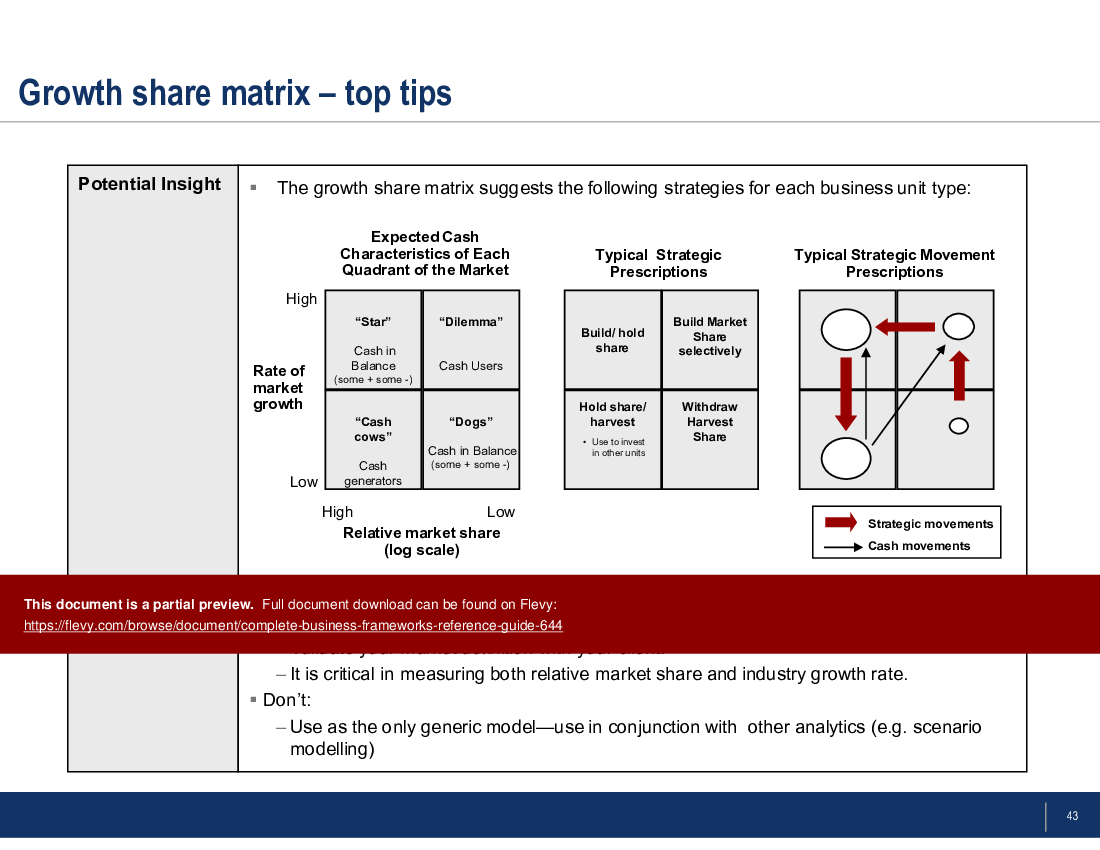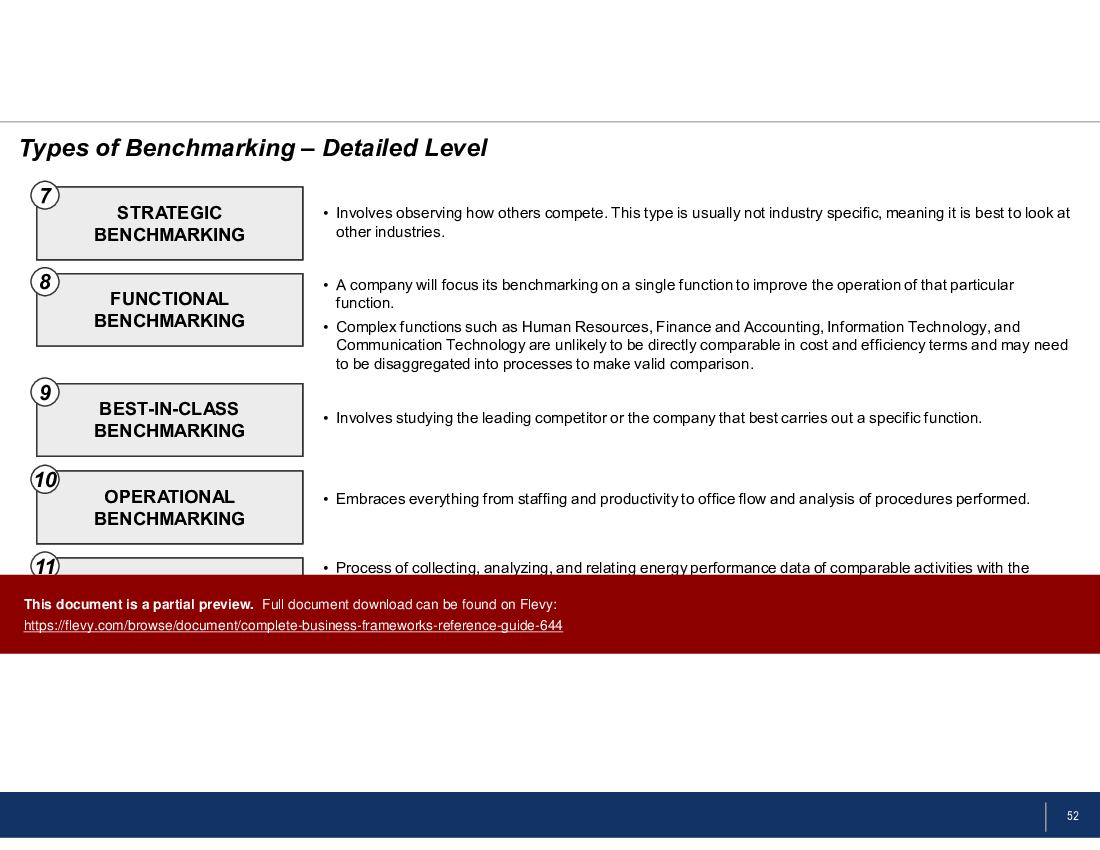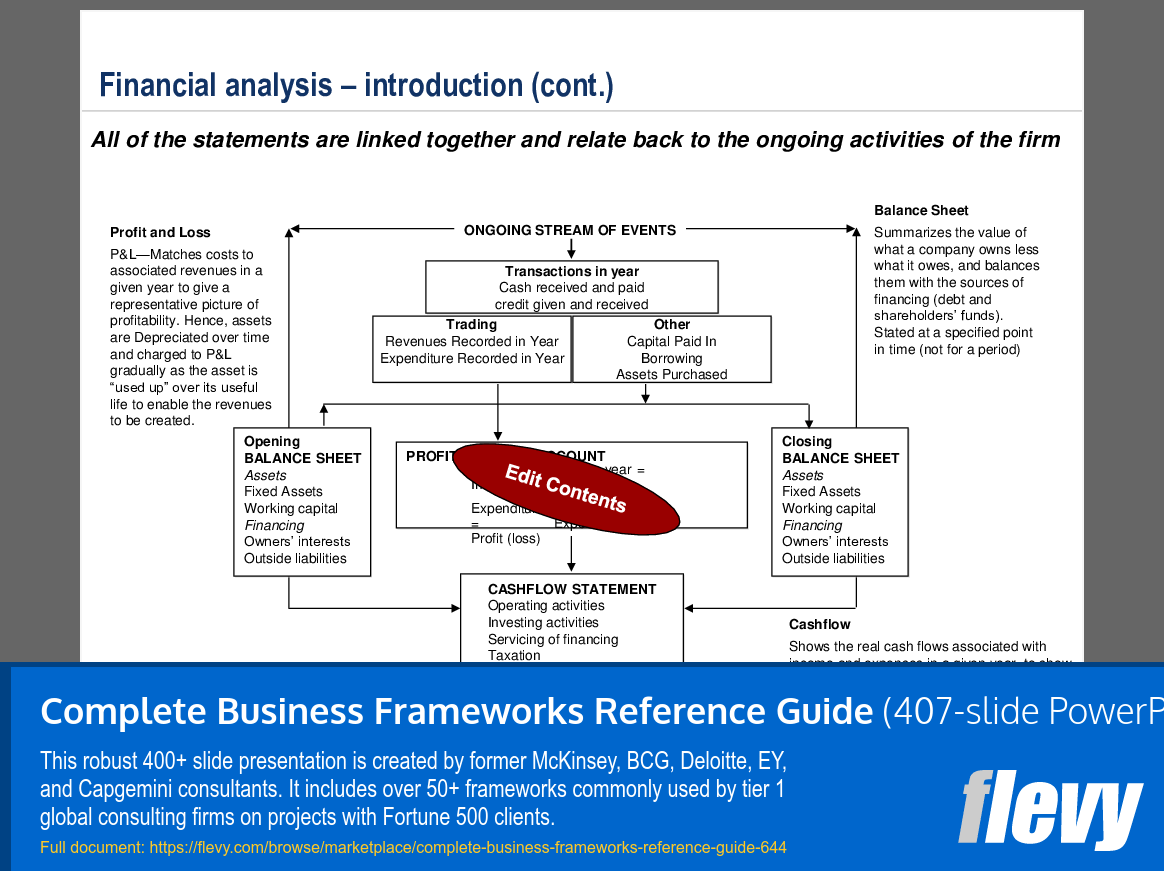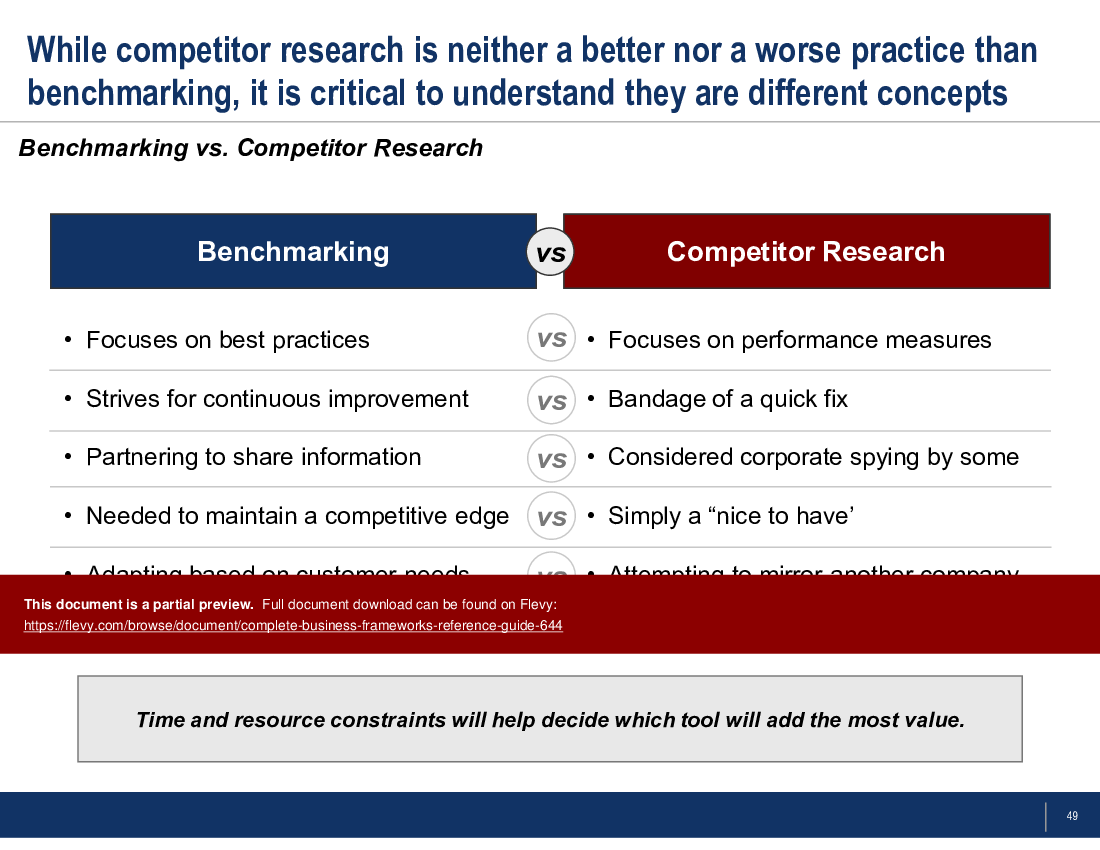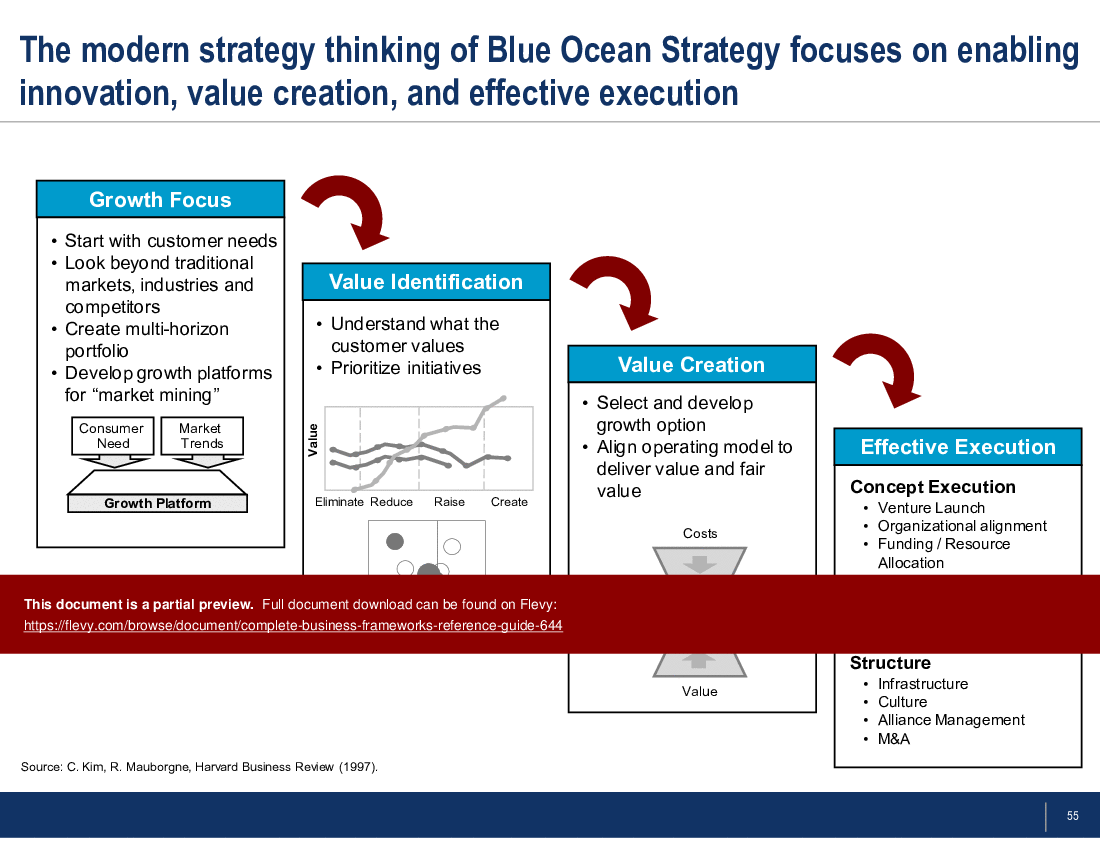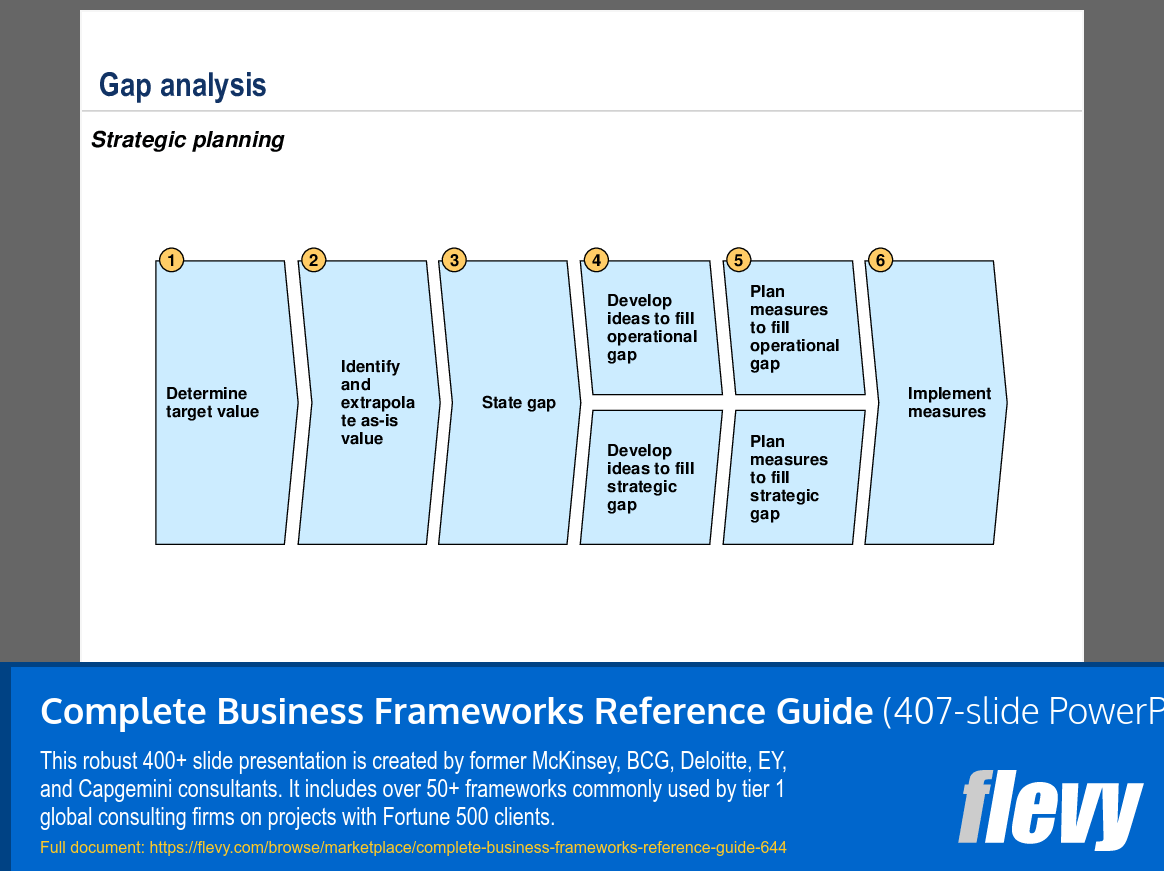Complete Business Frameworks Reference Guide (PowerPoint PPTX Slide Deck)
PowerPoint (PPTX) 407 Slides
STRATEGY FRAMEWORKS PPT DESCRIPTION
This is a very comprehensive document with over 400+ slides—covering 58 common management consulting frameworks and methodologies (listed below in alphabetical order). A detailed summary is provided for each business framework. The frameworks in this deck span across Corporate Strategy, Sales, Marketing, Operations, Organization, Change Management, and Finance.
INCLUDED FRAMEWORKS & METHODOLOGIES:
• ABC Analysis
• Acquisition Integration Approaches
• Adoption Cycle (Consumer Adoption Curve)
• Ansoff Market Strategies
• Balanced Scorecard
• BCG Growth-Share Matrix
• Benchmarking
• Blue Ocean Strategy
• Break-even Analysis
• Business Unit Profitability
• Competing Values Framework
• Economies of Scale
• Environmental Analysis
• Experience Curve
• Cluster Analysis
• Company & Competitor Analysis
• Consumer Decision Journey
• Core Competence Analysis
• Cost Structure Analysis
• Customer Experience
• Customer Satisfaction Analysis
• Customer Value Proposition
• Fiaccabrino Selection Process
• Financial Ratios Analysis
• Gap Analysis
• GE-McKinsey Matrix
• Industry Attractiveness & Business Strength Assessment
• Key Purchase Criteria
• Key Success Factors (KSF)
• Market Sizing & Share
• McKinsey 7-S
• Net Present Value
• PEST Analysis
• Porter Competition Strategies
• Porter's Five Forces
• Portfolio Strategies
• Price Elasticity
• Product Life Cycle
• Product Substitution
• Relative Cost Positioning
• Rogers' Five Factors
• Scenario Techniques
• Scoring Models
• Segment Attractiveness
• Segmentation & Targeting
• Six Thinking Hats
• Stakeholder Analysis
• Strategic Intent
• Strengths & Weaknesses Analysis
• Structure-Conduct-Performance (SCP)
• SWOT Analysis
• SWOT Strategies
• Theory of Constraints
• Treacy / Wiersema Market Positioning
• Value-based Pricing
• Value Chain Analysis
• Value Disciplines Model
• Venkat Matrix
These frameworks and templates are the same used by top tier consulting firms. With this comprehensive document in your back pocket, you can find a way to address just about any problem that can arise in your organization.
The level of detail varies by framework, depending on the nature of the management model. Examples, templates, and case studies are provided.
This guide includes step-by-step instructions for conducting ABC analysis and detailed breakdowns of the adoption cycle. It also offers templates for strategic positioning and balanced scorecards, ensuring practical application in real-world scenarios.
Got a question about the product? Email us at support@flevy.com or ask the author directly by using the "Ask the Author a Question" form. If you cannot view the preview above this document description, go here to view the large preview instead.
Source: Best Practices in Strategy Frameworks, Consulting Training, Gap Analysis, Bain PowerPoint PowerPoint Slides: Complete Business Frameworks Reference Guide PowerPoint (PPTX) Presentation Slide Deck, LearnPPT Consulting
STRATEGY FRAMEWORKS PPT SLIDES
Structured Approach to Market Segmentation and Targeting
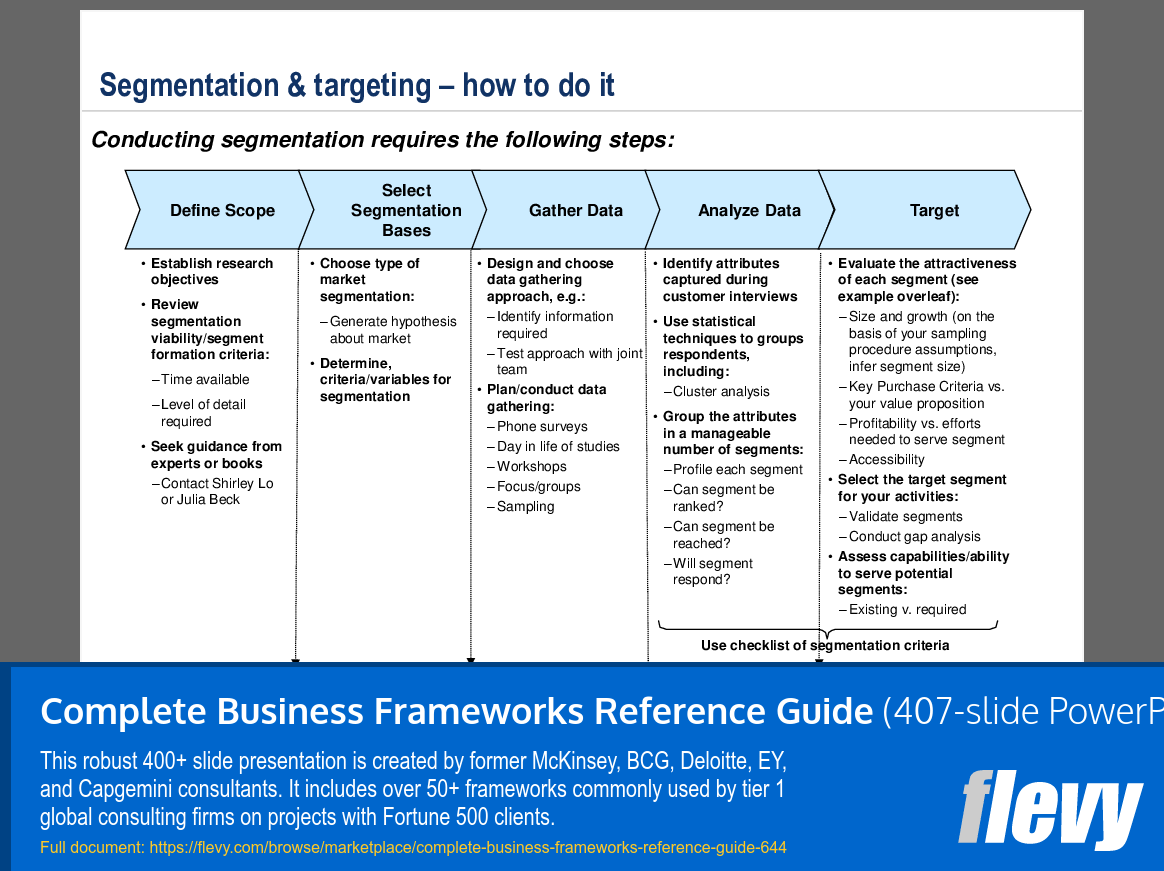
This PPT slide outlines a structured approach to segmentation and targeting, essential for effective market analysis. It is divided into 5 key steps: Define Scope, Select Segmentation Bases, Gather Data, Analyze Data, and Target. Each step is accompanied by actionable items that guide the user through the segmentation process.
In the "Define Scope" section, establishing research objectives is emphasized. This involves reviewing the viability of segmentation and determining the necessary criteria, such as time and detail level. Seeking expert guidance is also recommended, indicating the importance of leveraging existing knowledge.
The "Select Segmentation Bases" step focuses on choosing the type of market segmentation. Here, generating hypotheses about the market is crucial, along with determining the specific criteria or variables for segmentation. This sets the foundation for the subsequent data gathering.
Gathering data is the next phase, where designing a data collection approach is highlighted. Various methods such as phone surveys, workshops, and focus groups are suggested, ensuring a comprehensive understanding of the market landscape.
In the "Analyze Data" section, identifying attributes from customer interviews and employing statistical techniques like cluster analysis are key. Grouping these attributes into manageable segments allows for clearer insights into market dynamics.
Finally, the "Target" step evaluates the attractiveness of each segment. This involves assessing size, growth potential, and alignment with the company's value proposition. The focus on validating segments and conducting gap analysis ensures that the selected target segments align with organizational capabilities.
Overall, this slide serves as a practical guide for executives looking to implement a systematic approach to market segmentation and targeting, ensuring informed decision-making.









